Copyright © 1E 2022 All Rights Reserved
OS Supported - Microsoft Windows 11, 10
Description
This DEXPack (formerly Product pack) contains Endpoint Automation policy (formerly Guaranteed State), rules, and instructions that enable an organization to effectively manage device reboots with user interaction.
Key Features
IT Departments can:
-
Manage pending reboots after the patch deployment process to get the devices above compliance level without hampering users' work.
-
Perform a reboot of devices across the organization by prompting users through friendly and descriptive notifications.
Setup
-
Upload this DEXPack with the help of the Product Pack Deployment Tool.
-
An Endpoint Automation Policy named Manage Reboots will be created.
-
An Endpoint Automation Rule Enable user interactive reboots will be created in this policy.
-
An Instruction Set named IT Management containing all the instructions will be created.
Usage
-
Review the rule Enable user interactive reboots.
-
The precondition ensures RebootRecord storage exists on the device, this stores information on reboot history and end-user interaction.

- The trigger is periodically evaluated based on IntervalMinutes input to check the registry holding the current reboot status.
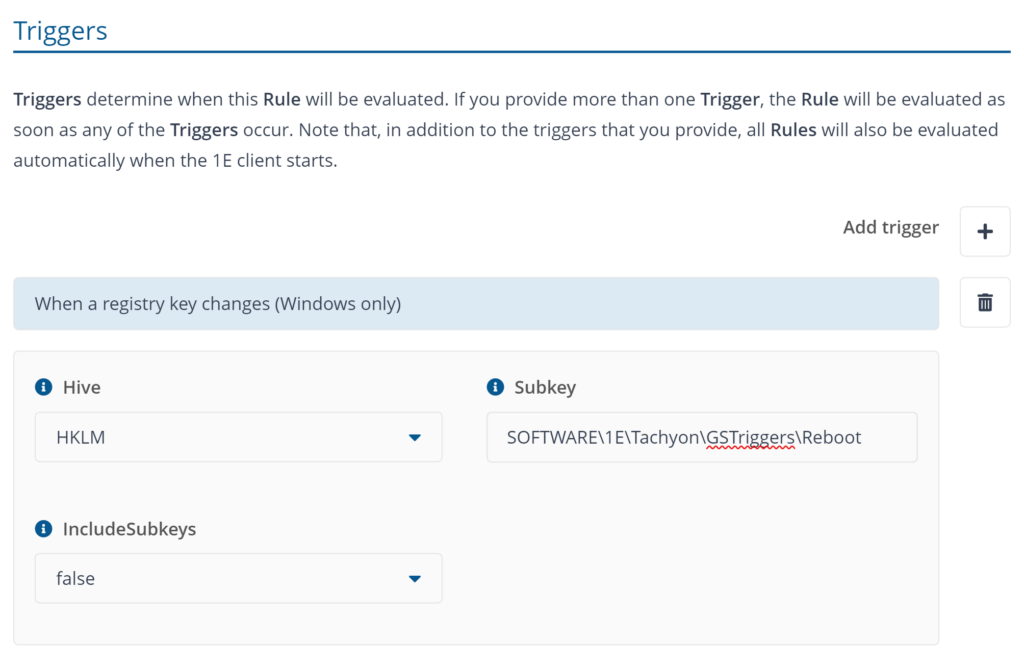
4. Check will trigger the fix if a reboot is pending.

5. Fix will provide a reboot notification on an end-user's device. The number of notifications will be displayed based on Prompt and Hours input.
Example: Hours = 9 and Prompt = 2 will result in a notification prompt in approximately 4.5 hours on an end-user's device. The second notification will be the final prompt on an end-user’s device to reboot, which cannot be deferred.
ForceRebootdurationsInSeconds input is the duration of the final notification prompt that will be displayed on an end-user’s device.
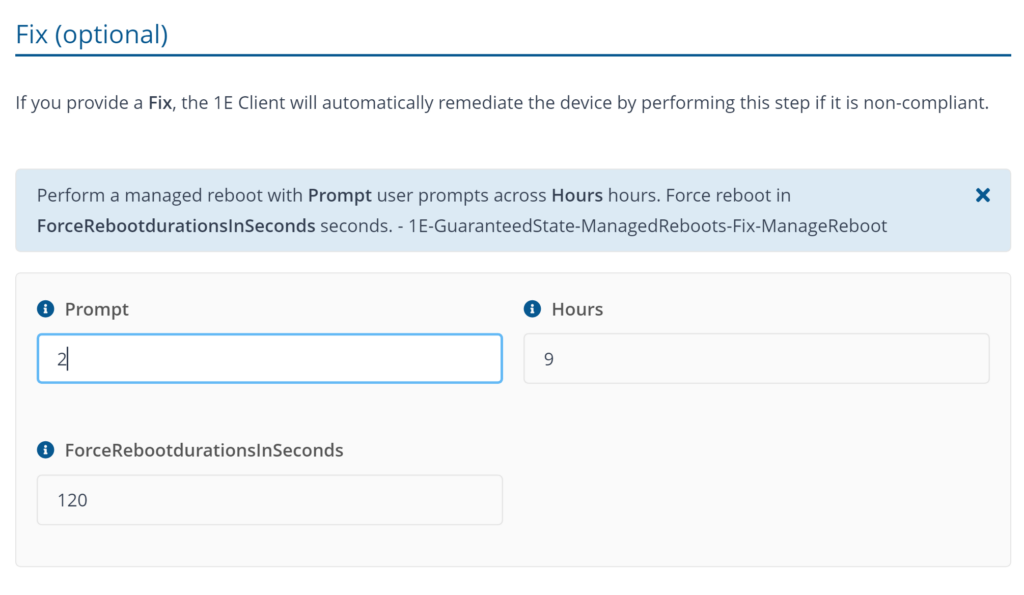
6. Review the rule Reboot Machine - Pending Reboot due to Uptime. This rule will check if a machine has not been rebooted within the specified number of days. If this condition is met, the rule will trigger a prompt to the user, indicating that a reboot is required. The number of prompts and force reboot notifications will depend on the configuration setup in the Enable user interactive reboots rule.
7. The trigger is periodically evaluated based on IntervalHours input
8. Check will be elevating the number to days since the machine is not rebooted based on RebootDays input and trigger the fix, Administrators can customise the notification message that will be displayed on end user's machine.
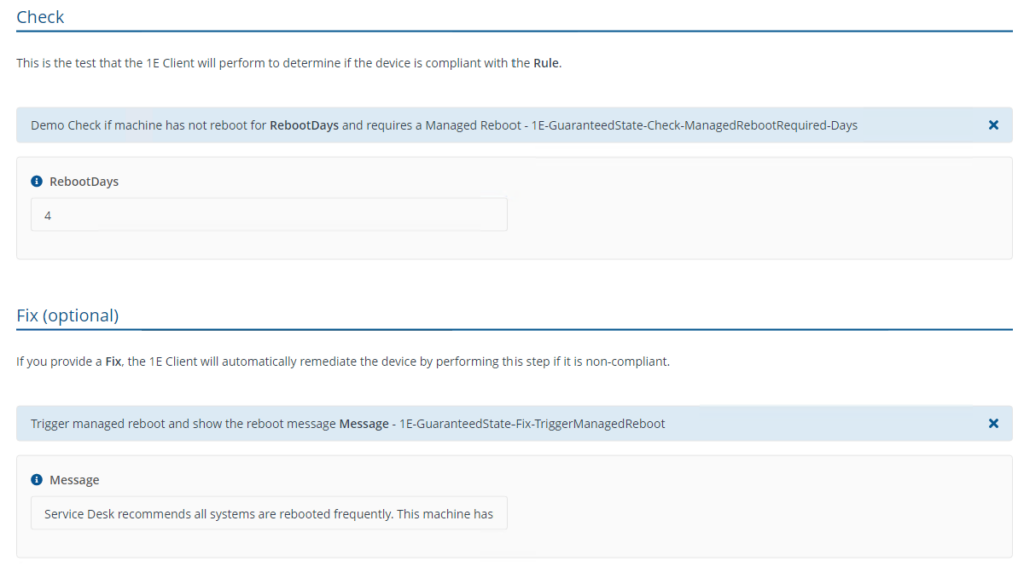
9. Review the rule Reboot Machine - Software update pending reboot. This rule will evaluate if a machine has pending reboots that are required, including machine renaming, pending reboot after OS updates, pending reboot after Windows feature installation, and pending reboot after domain join. Once evaluated, the rule will prompt the user with a notification to reboot the device. After the deferral period has elapsed, a force reboot will be initiated if necessary. The number of prompts and force reboot notifications will be determined by the configuration set up in the Enable User Interactive Reboots rule.
10. The trigger is periodically evaluated based on IntervalHours input and event generated in Windows event log will trigger the check and fix.
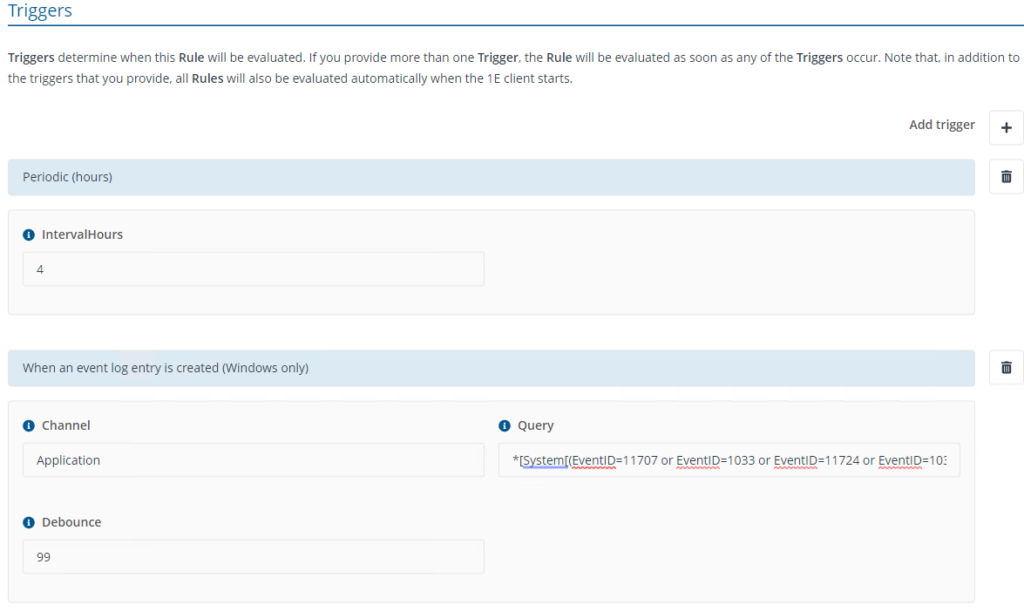
11. Check will evaluate if reboot is required and trigger the fix. Administrators can customise the notification message that will be displayed on end user's machine.
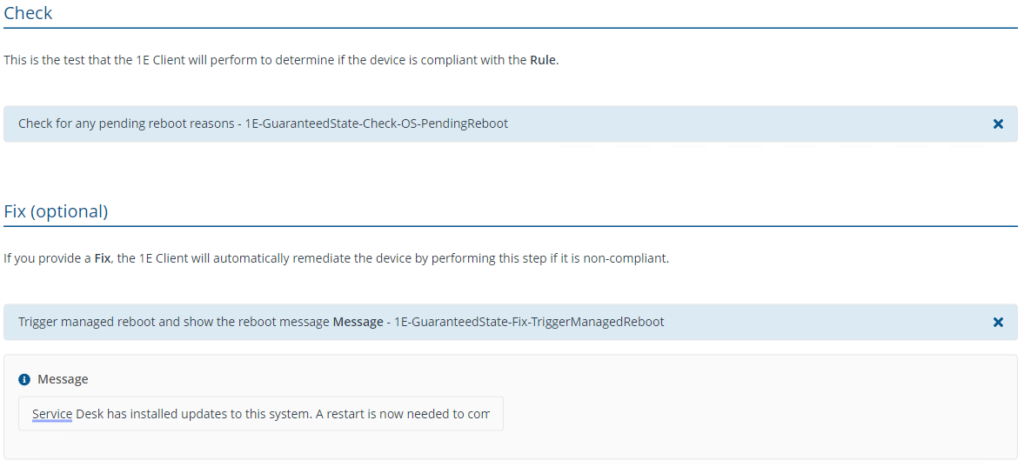
Reports
Reports will start to generate a few hours after the reboot instruction is triggered, you can view them in the Endpoint Automation application portal.
Device state definitions:
-
Compliant - represents if a reboot is triggered or completed on the device.
-
Not applicable - devices that have not been triggered to reboot.
-
Unknown - devices that have not reported their state.

Instruction
List the days since system last rebooted.
Provides the number of days since the device was last rebooted.

Trigger a GS Managed Reboot with Note: <Note>
This instruction creates the storage RebootRecord and starts the reboot process for the device.

Prompt on end-user device with a defer option.

Prompt on end-user device without defer option.
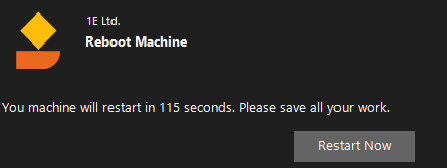
List Tachyon Managed Reboot details
Provides details of Managed Reboot status and user interaction.
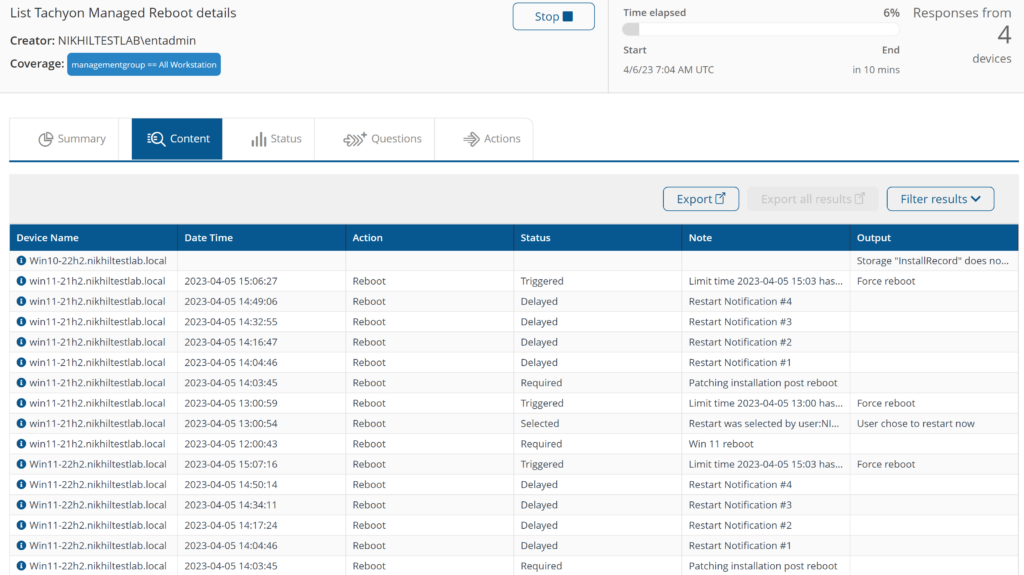
Reboot device in <RebootTimeInSeconds> seconds and <action> the message <message> to user.
This instruction will reboot a device in 15-180 seconds and provides an option to notify an end-user with a customised message, the end-user cannot defer the reboot once scheduled.
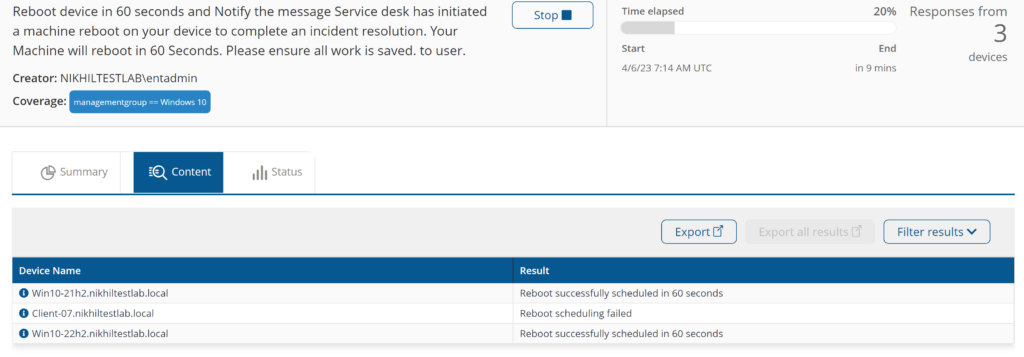
Prompt on end-users device:
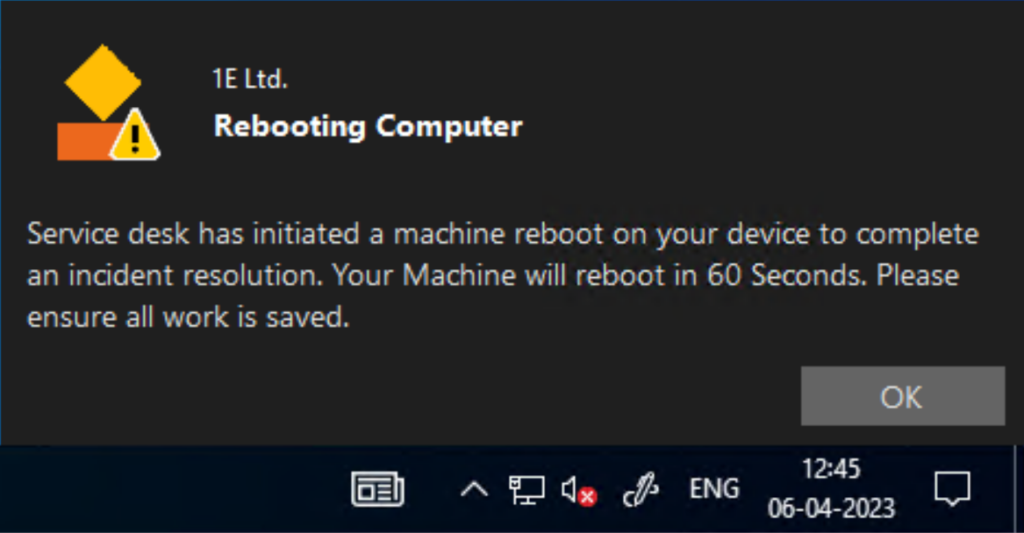
Components
1E-Exchange-LastReboot
Description
Provides the number of days since system last rebooted
Readable Payload
List the days since system last rebooted.
1E-Exchange-RebootSystem
Description
Show custom message to user to Schedules a reboot in seconds.CAUTION: DO NOT RUN AGAINST ALL SYSTEMS.
Readable Payload
Reboot device in %RebootTimeInSeconds% seconds and %action% the message %message% to user.
What's New
30/03/2024: bug fixes
08/09/2023: Implemented a rule to only notify the user to reboot the device due to uptime.
